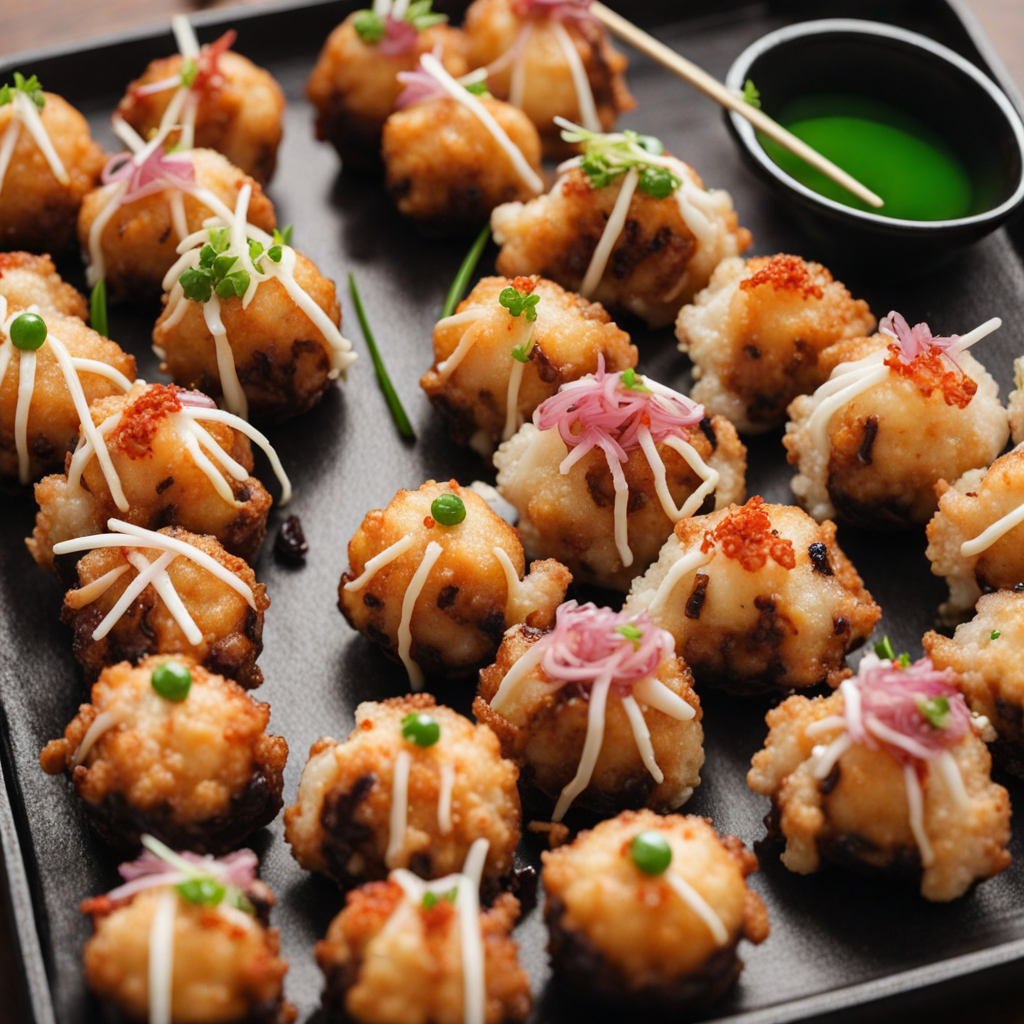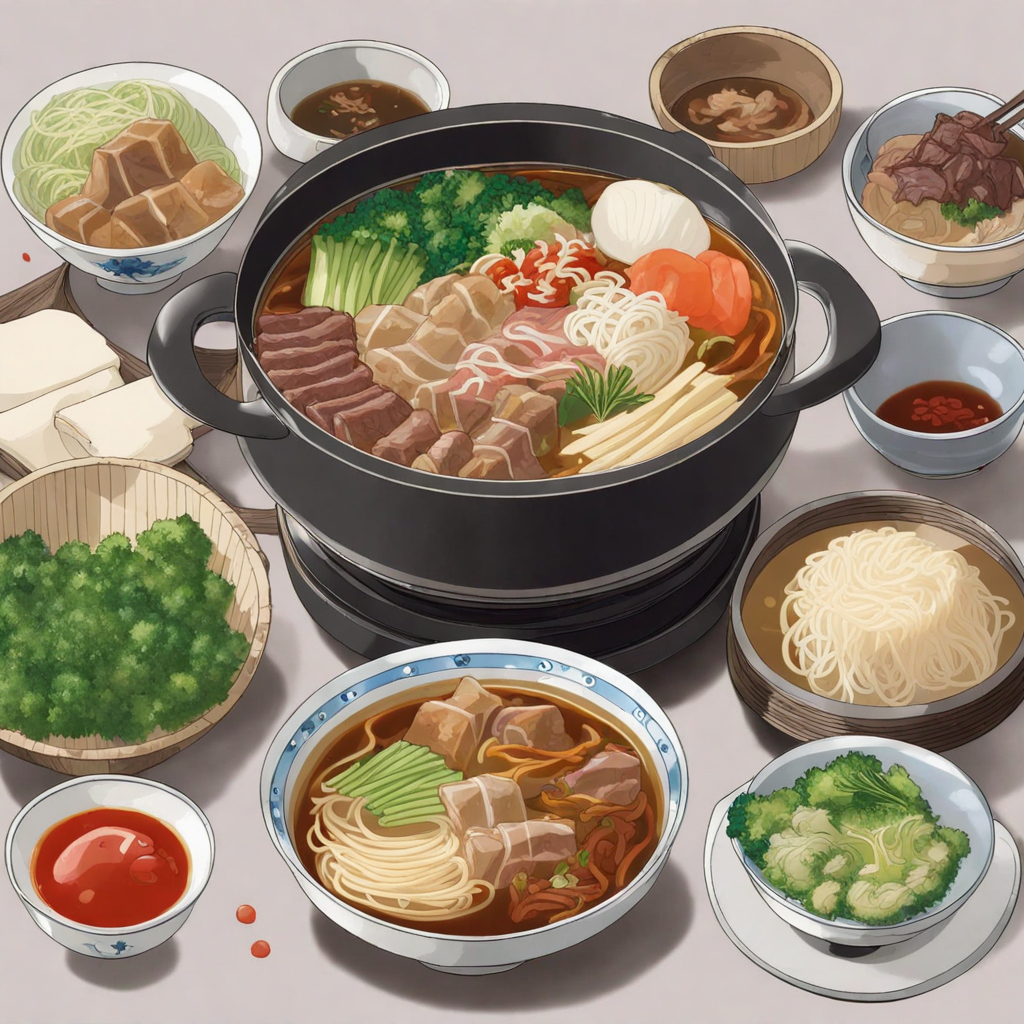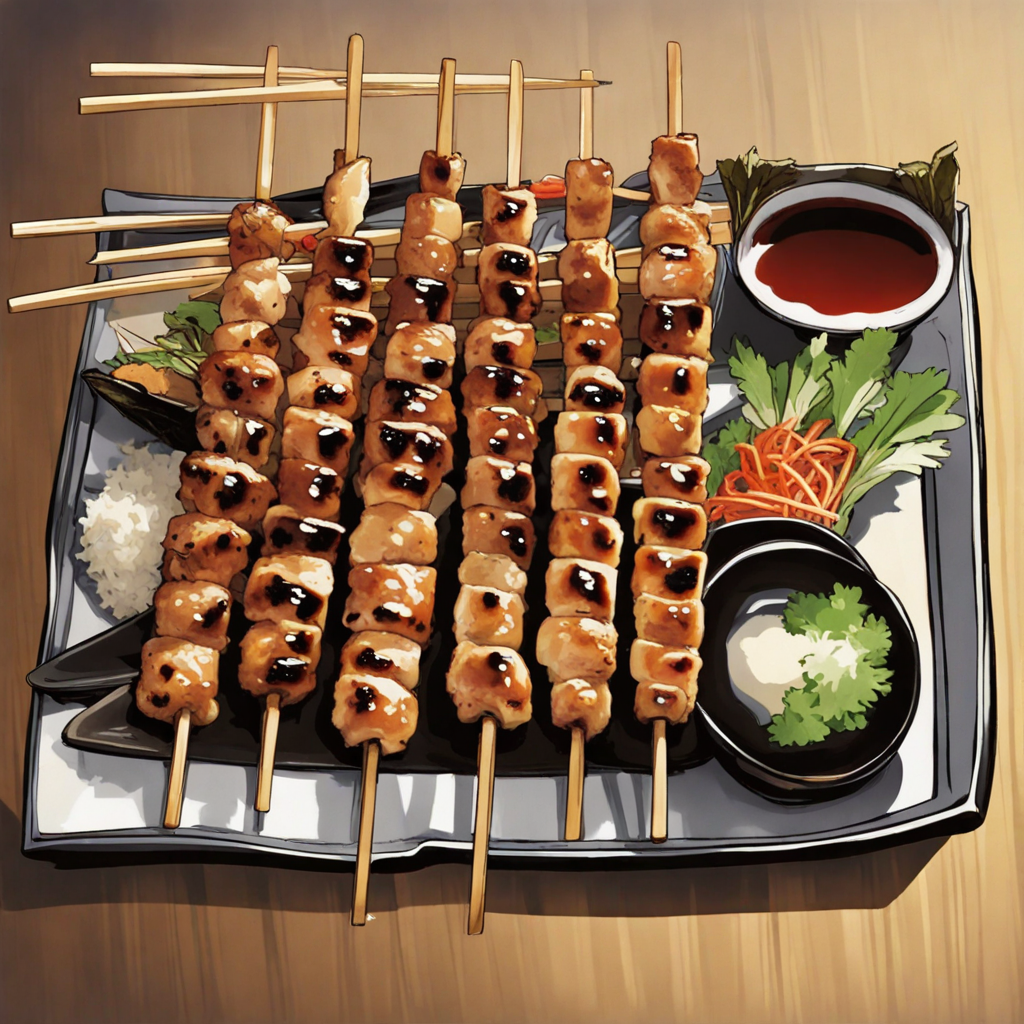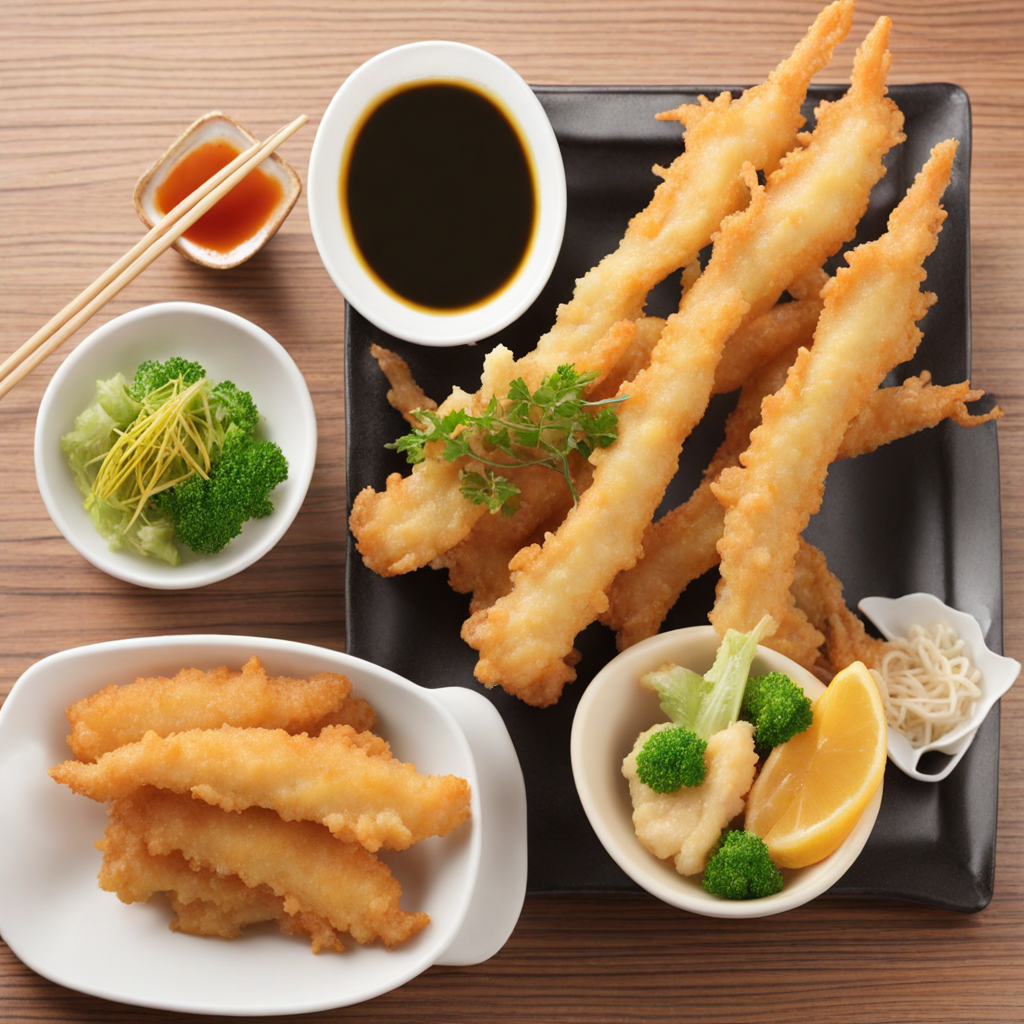Takoyaki
Takoyaki, a beloved street food from Japan, is a savory snack that has gained international acclaim for its unique flavor and delightful texture. Originating from Osaka in the early 20th century, Takoyaki was created by street vendors in 1935. The dish was inspired by a traditional Japanese dish called "akashiyaki," which is a similar ball-shaped snack made with a lighter batter and often includes octopus. The evolution of Takoyaki involved the incorporation of various ingredients and a distinct cooking method, which contributed to its widespread popularity across Japan and eventually around the world. The signature flavor of Takoyaki is a delightful blend of umami-rich ingredients. The primary ingredient is diced octopus, which lends a tender and slightly sweet seafood flavor. The batter, made from wheat flour, dashi (a Japanese soup stock), and eggs, creates a light and airy texture when cooked. Takoyaki is typically seasoned with soy sauce and mirin, enhancing its savory profile. The dish is often garnished with a variety of toppings, including green onions, pickled ginger, and a drizzle of Takoyaki sauce, which is a thick, sweet-sour sauce reminiscent of Worcestershire sauce. Finally, the dish is often finished with bonito flakes (katsuobushi) that dance atop the hot balls, adding a smoky flavor and a visual appeal. The preparation of Takoyaki is a skillful art that requires a specialized pan with half-spherical molds. This pan
How It Became This Dish
Origin of Takoyaki Takoyaki, a beloved Japanese street food, traces its origins back to the early 20th century in the city of Osaka. The dish is believed to have been inspired by a similar dish called 'akashiyaki,' which originated from Akashi in Hyogo Prefecture. Akashiyaki is made with a batter of wheat flour, dashi (a Japanese soup stock), and pieces of octopus, cooked in a molded pan. The transition from akashiyaki to takoyaki occurred during the 1930s when a street vendor named Tomekichi Endo began experimenting with the dish, adding a unique twist by shaping the batter into round balls and incorporating additional ingredients like green onions and pickled ginger. The term "takoyaki" itself derives from two Japanese words: 'tako' meaning octopus and 'yaki' meaning grilled or cooked. This name perfectly encapsulates the essence of the dish, which features tender pieces of octopus encased in a fluffy, savory batter. The popularity of takoyaki surged during the post-war period, particularly in the Kansai region, as street food vendors began to sell the snack at festivals and markets, quickly becoming a staple of Japanese street cuisine. \n Cultural Significance Takoyaki holds a special place in Japanese culture, especially in Osaka, often referred to as the "kitchen of Japan." The dish is more than just a snack; it represents the spirit of communal dining and social interaction. Vendors typically prepare takoyaki in front of customers, creating an engaging atmosphere where people can gather, watch the cooking process, and enjoy the delicious aroma wafting through the air. The dish's cultural significance extends beyond its taste and preparation. Takoyaki is often associated with festivals, where it is a common sight at food stalls, and it embodies the concept of 'yatai,' or food stalls that pop up during special events. These stalls conjure a sense of nostalgia for many, reminding them of childhood experiences at local festivals. Additionally, the dish has become a symbol of Osaka's culinary identity and is celebrated in various forms across Japan, highlighting the region's rich food culture. \n Development Over Time As takoyaki gained popularity, it underwent various transformations. By the 1950s and 1960s, the dish began to be commercialized, leading to the establishment of specialized takoyaki restaurants, or 'takoyaki-ya.' These establishments often offer diverse variations of the traditional recipe, catering to different tastes. Some variations include adding cheese, shrimp, or even different sauces, diverging from the classic octopus filling. The cooking technique also evolved, with the introduction of electric takoyaki grills that replaced the traditional cast-iron molds. These electric grills allowed for easier cooking and made it possible for more people to prepare takoyaki at home. Home preparation kits became popular, allowing families to enjoy this iconic dish in their own kitchens. This accessibility contributed to its status as a comfort food for many Japanese households. \n Global Spread In recent decades, takoyaki has transcended its regional roots and gained international recognition. The globalization of food culture has led to the proliferation of Japanese cuisine worldwide, with takoyaki being one of the standout dishes. Japanese restaurants and food festivals across the globe often feature takoyaki on their menus, appealing to both adventurous eaters and those seeking authentic Japanese flavors. The rise of social media has played a significant role in the global spread of takoyaki. Food bloggers and influencers have showcased the dish, sharing visually appealing images and videos that highlight its preparation and consumption. This exposure has helped takoyaki gain a following outside of Japan, with food trucks and specialty restaurants appearing in cities such as New York, Los Angeles, and London, where people can enjoy this unique culinary experience. \n Variations and Innovations With its growing popularity, many creative interpretations of takoyaki have emerged, reflecting local tastes and culinary trends. In addition to the traditional octopus filling, chefs now experiment with a variety of ingredients, including beef, chicken, and even vegetarian options. Some innovative versions incorporate fusion elements, such as takoyaki tacos or takoyaki burgers, showcasing how this traditional dish can evolve while still retaining its core identity. Moreover, the toppings and sauces used in takoyaki have also seen an increase in variety. Traditional takoyaki is typically garnished with takoyaki sauce, a sweet and savory sauce similar to Worcestershire sauce, along with bonito flakes, aonori (dried seaweed), and mayonnaise. However, modern interpretations may feature spicy sauces, sriracha, or even unique drizzles that cater to diverse palates. \n Conclusion Takoyaki is more than just a delicious snack; it is a cultural symbol of Japan that has evolved over time while maintaining its roots. From its origins in Osaka to its global presence, takoyaki reflects the dynamic nature of food culture and the ways in which culinary traditions can adapt and thrive in new environments. As it continues to captivate food lovers worldwide, takoyaki remains a testament to the rich tapestry of Japan’s culinary heritage, celebrating the joy of sharing good food with friends and family.
You may like
Discover local flavors from Japan







